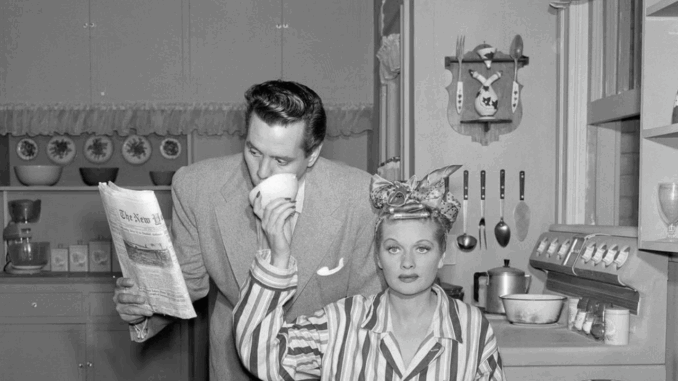
The Show That Did It First
While other sitcoms of the 1950s played it safe, I Love Lucy broke nearly every rule—and invented a few new ones. From its filming style to its casting, the show was quietly revolutionary, all while making people laugh until they cried.
The First Interracial Couple on TV
Lucille Ball fought hard to cast Desi Arnaz, her real-life Cuban husband, as her on-screen partner. Network executives were concerned that American audiences wouldn’t accept a white woman married to a Latino man on primetime TV. But Lucy held firm, saying, “He’s my husband in real life. If he doesn’t play my husband, I’m not doing the show.”
It was a bold move. And it paid off. Audiences loved Ricky Ricardo—not just because he was charming and funny, but because he brought a new cultural flavor to television. He spoke Spanish. He played Afro-Cuban music. He mispronounced words with flair. And America embraced him.
A Technical Revolution

Desilu Productions pioneered the use of multi-camera filming in front of a live studio audience—a practice still used today in shows like Friends and The Big Bang Theory. They also recorded on 35mm film, preserving episodes in higher quality for future syndication, which helped I Love Lucy become the first TV show to live on in reruns.
The First Pregnant Woman on Prime Time
Lucille Ball’s real-life pregnancy was written into the show—a first for American TV. But CBS censors wouldn’t allow the word “pregnant” to be used on air, so the writers had to use “expecting” instead. Despite the restriction, it was groundbreaking. When Lucy gave birth to “Little Ricky,” more Americans tuned in than watched Eisenhower’s inauguration the next day.
A Legacy That Still Echoes
Every sitcom since—from Seinfeld to Modern Family—owes something to I Love Lucy. The show wasn’t just entertainment. It was quietly, persistently, brilliantly revolutionary.
